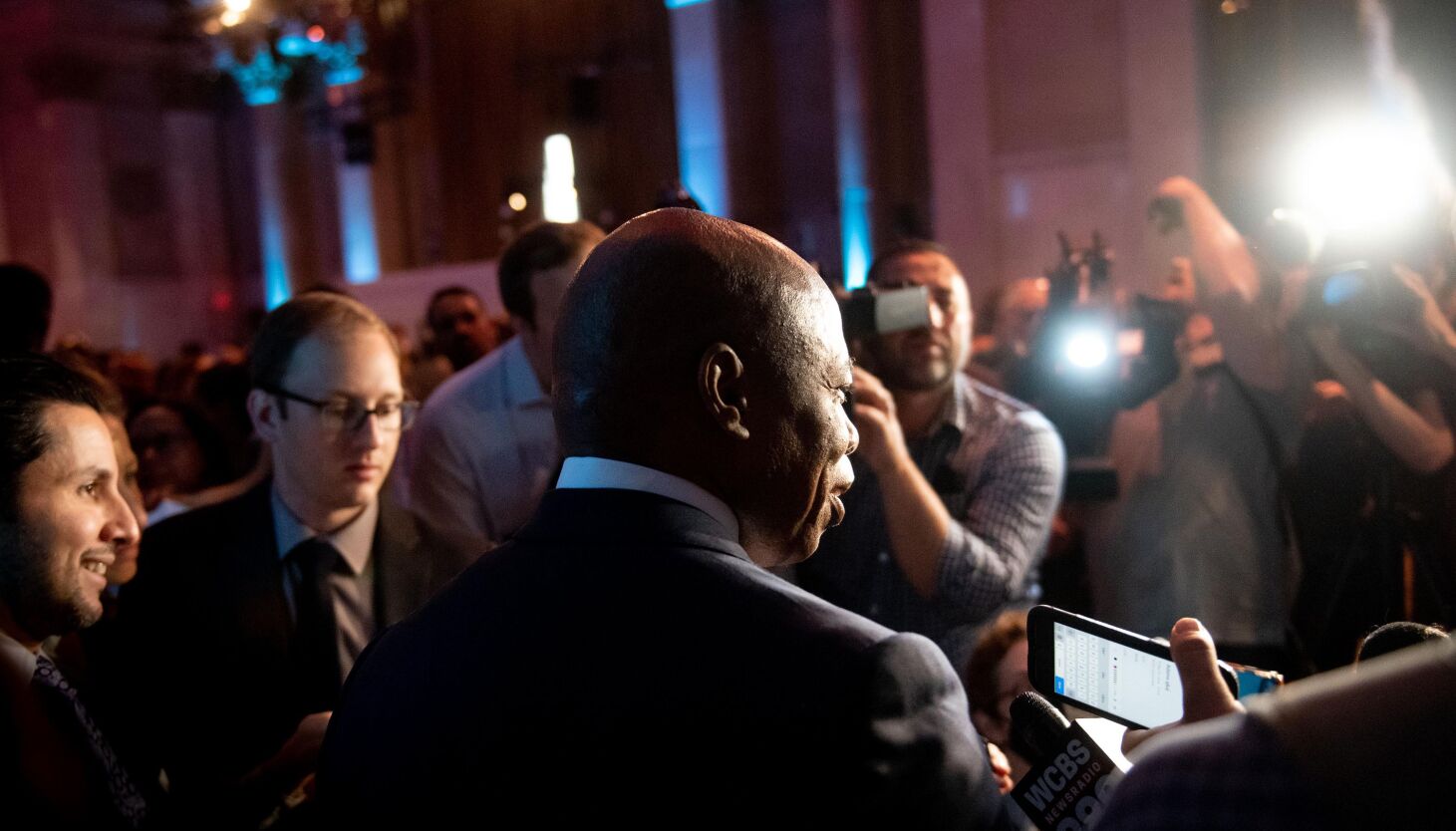In early March, barely two months after taking office, Mayor Eric Adams unveiled his plan to revive the city’s economy after the devastation of the pandemic shutdown, which had cost the city some 970,000 jobs.
He said he would focus on helping small business, training and connecting New Yorkers to better jobs, boosting tourism, investing in growth sectors like life sciences, and charging a panel of business and civic leaders with figuring out what to do about business districts whose offices were less than 40% occupied.
“The blueprint had five pillars that were really intended to be a roadmap for how we accelerated the recovery,” said Maria Torres-Springer, deputy mayor for economic and workforce development and the author of the plan, at a Crain’s New York Business breakfast earlier this month.
The Adams administration does have accomplishments to talk about. It takes partial credit for the bounce back in tourism, spotlights the steps it has taken to reduce fines and penalties for small business, and has unveiled a major life sciences center to be built at CUNY’s Hunter College.
But the recently issued report from the ‘New’ New York panel on the future of the city’s business districts was long on vision and so lacking in details — especially about budget impacts and tax incentives — that Comptroller Brad Lander, one of the city’s leading progressives, said he could support every one of its suggestions at the moment. Major proposals for change to the city’s workforce program are awaiting another report, scheduled to be released next year.
The Adams revival plan simply has not accelerated the recovery. New York City has regained only 85% of the jobs lost in the pandemic, while the nation overall has exceeded the pre-COVID record by about 1 million jobs. Forecasts for next year put the job gains at a quarter of this year’s 200,000, and envision a full recovery only in late 2024, even 2025.
The mayor’s promise with the most progress is eliminating a practice that many businesses see as harassment. In May, Adams announced that he was eliminating fines on 30 regulations, reducing the fine amounts on 49 other regulations, and providing a grace period to fix any problems on an additional 39.
Two examples: No longer will businesses have to pay up if they don’t have a separate container for compostable straws. They will be given time to fix faulty grease traps, instead of being immediately fined.
Some business groups say that the city agencies they deal with have become more responsive.
“The Department of Small Business Services has been incredibly supportive of our efforts to grow the tech sector in Queens, where we launched the first two of five Queens Tech Incubators,” said Thomas Grech, president of the Queens Chamber of Commerce.
The first major investment in growth sectors is a $1.6 billion life sciences center to be built by Hunter College in the Kips Bay neighborhood of Manhattan. The project includes space for Hunter’s nursing school, a new Bellevue Hospital ambulatory care center, a new public high school focused on preparing students for careers in health care and science, and new commercial office space.
The plan by Adams and Torres-Springer emphasizes an overhaul of the city’s workforce policies, which too often wound up placing jobless New Yorkers in low-wage jobs with few prospects. Except for a small pilot program for construction jobs, major steps will wait at least until a report due early next year from one of several task forces established after the March announcement.
“I grade this as an incomplete because while the right conversations are happening, the challenge is how to get recommendations enacted over time,” said Greg Morris chief executive of the New York City Employment and Training Coalition.
The need is growing. The city’s unemployment rate for young men ages 16 to 24 is approaching 25% and increasing, even as the jobless rate for women the same age is declining.
Not de Blasio
The “New” New York report calls for turning business districts like Midtown Manhattan into 24/7 neighborhoods by adding more residential buildings and amenities to make them live/work districts.
A commission jointly named by Adams and Gov. Kathy Hochul released the report two weeks ago amid mounting concern over the future of Manhattan’s 600 million square feet of office space. Office occupancy on a typical weekday has stalled at about 50%, according to data from the security firm Kastle Systems. The vacancy rate in Manhattan is approaching 20%, and leasing activity has declined as companies delay decisions while waiting to see how many workers will be in the office and for how many days a week.
In releasing the report, Adams acknowledged for the first time that hybrid work is here to stay, giving up on his monthslong campaign to cajole companies to force their workers to come to the office every weekday.
But details were scarce even on its long-awaited recommendations about turning obsolete office buildings into apartments. The Adams administration hasn’t provided guidelines on which buildings should be converted, and how — and whether tax incentives or other government aid would be needed.
More than specific programs, it is the contrast to former Mayor Bill de Blasio that has turned many businesspeople into supporters of the new mayor.
“Mayor Adams changed the tone in a significant way and brought the business community back to the table as an enthusiastic partner to improve the city’s outcomes after Mayor de Blasio had done so much damage to those relationships,” said Jessica Walker, president of the Manhattan Chamber of Commerce.




